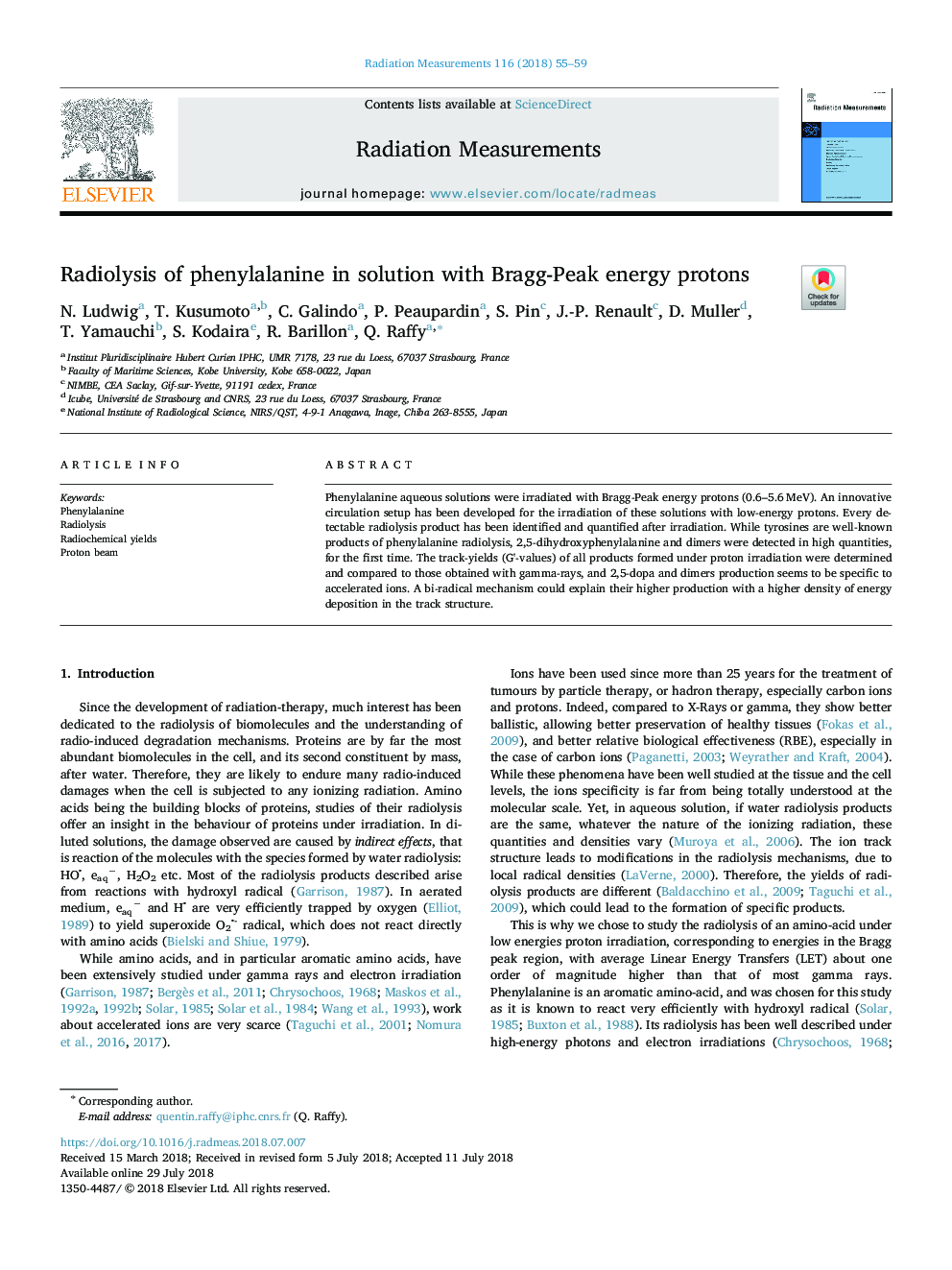| Article ID | Journal | Published Year | Pages | File Type |
|---|---|---|---|---|
| 8249696 | Radiation Measurements | 2018 | 5 Pages |
Abstract
Phenylalanine aqueous solutions were irradiated with Bragg-Peak energy protons (0.6-5.6â¯MeV). An innovative circulation setup has been developed for the irradiation of these solutions with low-energy protons. Every detectable radiolysis product has been identified and quantified after irradiation. While tyrosines are well-known products of phenylalanine radiolysis, 2,5-dihydroxyphenylalanine and dimers were detected in high quantities, for the first time. The track-yields (G'-values) of all products formed under proton irradiation were determined and compared to those obtained with gamma-rays, and 2,5-dopa and dimers production seems to be specific to accelerated ions. A bi-radical mechanism could explain their higher production with a higher density of energy deposition in the track structure.
Keywords
Related Topics
Physical Sciences and Engineering
Physics and Astronomy
Radiation
Authors
N. Ludwig, T. Kusumoto, C. Galindo, P. Peaupardin, S. Pin, J.-P. Renault, D. Muller, T. Yamauchi, S. Kodaira, R. Barillon, Q. Raffy,
